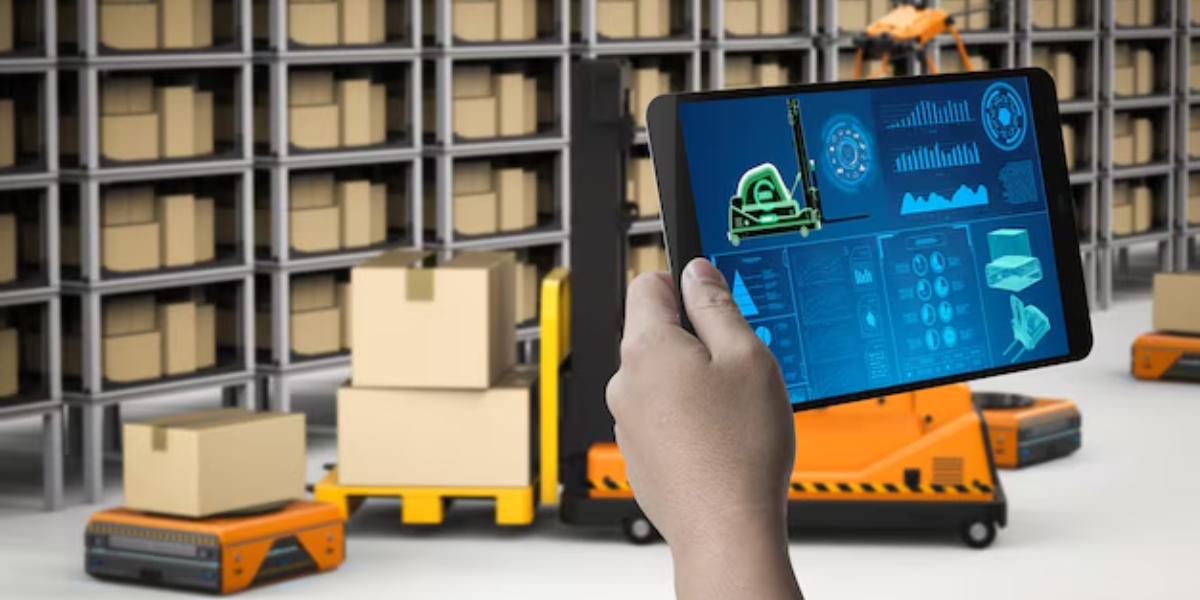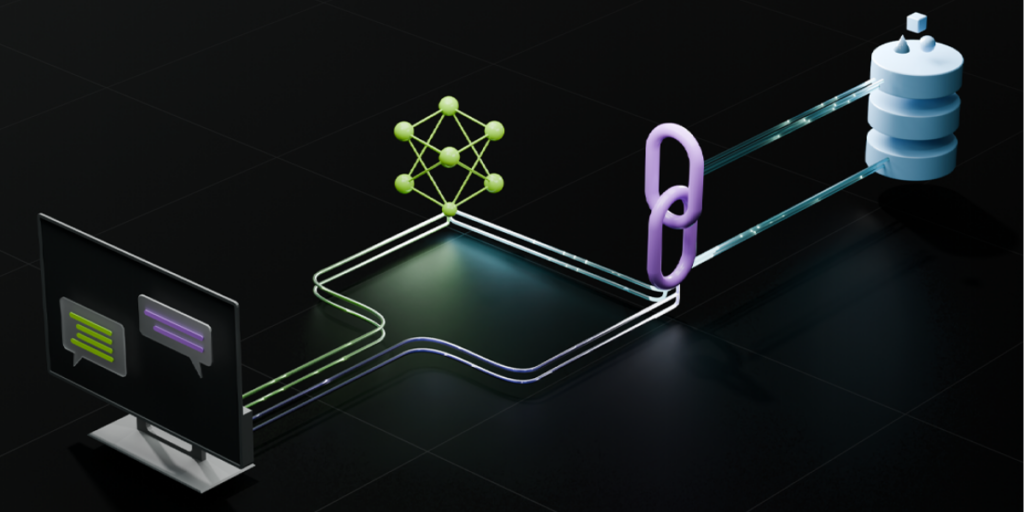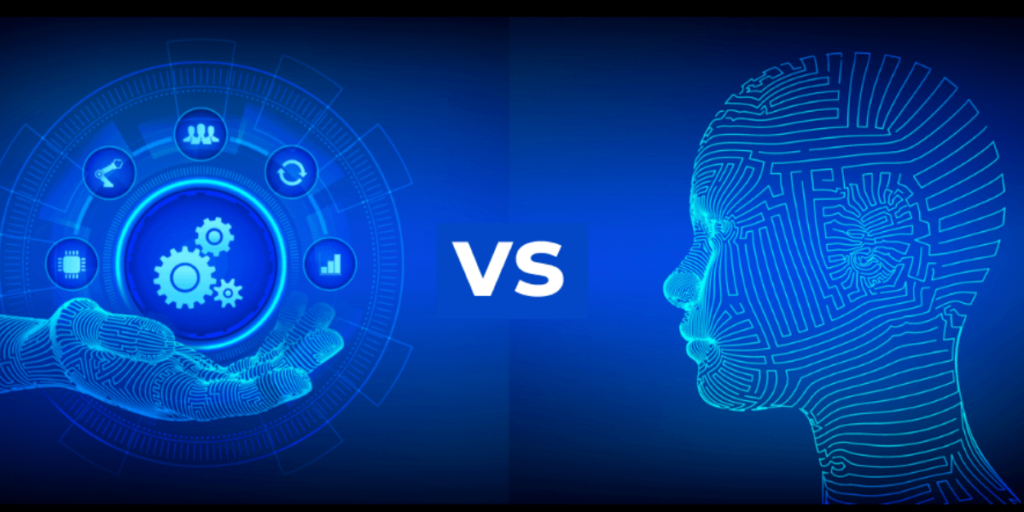If you work in the supply chain industry, there is a good chance that you have heard about the hype around AI within the supply chain. Did you know that across all industries, AI’s most significant return on investment is found in managing supply chain processes. Based on 2024’s McKinsey Global Survey on AI, 46% of corporate executives said that adopting a generative AI decreased expenses and boosted revenue by 10%-20 %. This does not just represent a glitch or minor improvement. It’s the result of fewer delays, more visibility, and better supply chain resilience, which was made possible by artificial intelligence.
For small and mid-sized enterprises as well as global companies, AI has a broad range of applications in supply chain management and has the power to revolutionize the supply chain industry. Machine learning and AI logistics software development can access massive amounts of data from supply chains, detect patterns, and give human-like advice. They can also be taught on the job, integrating other technology to improve their abilities as time passes. AI technology is rapidly affecting the supply chain management process.
Now the question arises what are AI’s best use cases in supply chain and logistics? What are the ways that industry leaders are implementing AI? This blog post addresses these questions and offers concrete insights into AI’s role in the supply chain industry.
So, let’s get started.
The Role Of AI In The Supply Chain & Logistics
The supply chain may become difficult, especially for companies that manufacture products and depend on their suppliers to deliver them promptly and in a well-organized way. AI will keep every aspect of the supply chain in equilibrium by recognizing patterns and connections not found in traditional systems. The patterns it finds can aid in optimizing logistics systems throughout the process, from storage facilities to cargo carriers to distribution centers.
With the help of AI-driven technologies, companies are changing their inventory management, logistics, and demand forecasting strategies. This results in improved efficiency in business operations and a greater ability to adapt and compete in a highly global market. The process starts with acquiring the raw materials through vendors and concludes with delivering the finished product to the buyer.
Enterprises can benefit from AI’s capabilities to make informed decisions concerning material purchases, enhance inventory storage capacity, produce plans, and more. AI integration into supply chain operations has brought tangible advantages in terms of productivity and efficiency improvements, as well as increased safety standards inside the warehouses they operate.
For the logistics sector, AI enables intelligent decision-making and ensures efficient use of resources while reducing costs. By monitoring in real-time and analyzing data related to transportation, AI will optimize routes for delivery, predict the need for maintenance, and decrease fuel consumption.
Additionally, AI-powered predictive analytics improve supply chain management by forecasting demand, improving inventory levels, and improving operations’ overall efficiency. Continuous development and the incorporation of AI technologies have enormous promise in the logistics and supply chain industries in the near future, which will drive further improvements and innovations.
Benefits Of AI In Supply Chain And Logistics
Manufacturers have been at the cutting edge of AI technology, testing various versions of the technology in the various production facilities, storage and distribution facilities, and transportation vehicles that are part of the modern supply chain. AI can bring a variety of benefits, including:
Improvement In Warehouse Efficiency
AI will make warehouses more efficient by helping to organize their racks and designs. By analyzing the amount of material transported across aisles in warehouses, ML models can recommend floor plans that improve accessibility and the journey times of stock from receiving racks and packing stations.
They can also plan the optimal routes for robots and employees to transport inventory quicker and increase the fulfillment rate. In addition, by analyzing demand signals from production lines, marketing, and point-of-sale systems, artificial intelligence-powered forecasting systems can help keep track of inventory costs and carrying and further optimize storage capacity.
Enhanced Safety
Artificial Intelligence-powered automated tools allow for an efficient and smarter administration of warehouses, which will help improve the safety of workers and materials. AI will analyze workplace security data and notify companies about the possibility of hazards.
It can record parameters for stocking and monitoring operations, as well as the necessary feedback loops and proactive maintenance. The system allows businesses to respond quickly and effectively to keep warehouses secured and compliant with security regulations.
Lower Operating Costs
Because AI can recognize complex behavior patterns and function in unpredictable environments, routine jobs, like counting, tracking, and recording inventory, could be accomplished more accurately and with less effort. In identifying inefficiencies from repetitive tasks, AI can cut the expense of running a complicated supply chain.
AI will also save producers and distributors cash by reducing critical equipment downtime. Intelligent systems will detect problems or breakdowns in early phases or anticipate them before they happen, which can reduce disruptions and the financial loss that comes with it.
Fewer Mistakes And Lower Waste
AI is able to detect anomalous behaviors from humans and machines faster than humans. This is why warehouse managers and shipping firms are working to train algorithms to detect weaknesses in their processes, employee mistakes, and product flaws.
The cameras in the logistics hubs, assembly lines, and delivery vehicles are fed into computers that employ AI to examine work. This cuts down on recalls, returns, and the need for rework. AI can detect errors machines and workers make before products are misassembled or delivered to incorrect locations, reducing time and money.
Storage Efficiency Improved
To ensure seamless operation, AI integration in the supply chain offers essential insights into various critical factors, such as storage needs, transport times, and equipment requirements. In addition, logistics management software development can determine the most compatible product-to-container compatibility and identify the appropriate container for each item. They also assist in determining the correct number of boxes necessary for effective delivery of every item.
Seamless Customer Service
AI improves customer service within the supply chain, giving real-time order status tracking, personalized communication, and quick resolution to issues. Virtual assistants and chatbots provide 24 customer support, responding to inquiries and providing timely updates. Analytics that predict customer demands and improve inventory levels to avoid stockouts and ensure the customer is always satisfied.
Top AI Applications In The Supply Chain & Logistics
AI applications within the supply chain and logistic sector are employed across different departments to increase efficiency. In this section, we will look at some of the most effective AI applications within logistics and the supply chain business and their impact.
Transforming Supply Chain Visibility
AI can work in conjunction with Internet-of-Things (IoT) sensors to better understand the supply chain. For example, Roambee’s artificial intelligence-powered platform blends live IoT sensor data with streams from ports, carriers and airports, railway lines, traffic reports, and weather forecasts. It then converts the information into contextual and predictive information, such as business signals, replenishment triggers, and Quality compliance forecasts.
Material Sourcing For Manufacturing
Companies can source components faster and at a lower cost with AI-powered supply control platforms, including LevaData, which helps businesses like Bose make informed choices about direct material sourcing. LevaData offers lead times for manufacturers for a range of commodities that help companies discover other suppliers that can provide consistency. The dashboard dissects spending data and offers guidelines so that supply chain professionals can identify patterns and saving opportunities.
Inventory Management
AI allows supply chain executives to accurately determine the best stock levels, spot slow-moving items, and forecast possible stock shortages and excess stock scenarios. This valuable data empowers firms to simplify stock management, enhance the process of fulfilling orders, reduce the cost of holding, and ultimately improve the efficiency of their supply chain.
Gaviota, an automated shutter and sun protection maker, employed the SO99+ software from ToolsGroup and achieved an increase of 43% in inventory levels. This reduced inventories by 35 days instead of 61. The SO99+ application determined the ideal combination of inventory in the manufacturing supply chain to meet service-level goals. Gather AI is an additional AI-powered inventory management software. It uses drones to move through warehouses to take photos of items stored in pallets.
Route Optimization
AI models assist businesses in examining existing routing patterns and following route optimization. Optimization of routes employs shortest-path algorithms within the graph analytics discipline to determine the most effective way for trucks to transport cargo. This means that the company can cut down on the cost of shipping and accelerate shipping.
In the case of Valerann, for instance, its Smart Road System is an AI internet-based traffic management platform that delivers road traffic conditions for autonomous cars and users. Route optimizers can also be efficient tools to reduce your carbon footprint as a business.
Product Localisation and Identification
AI has many applications in supply chain management, and some can improve your warehouse’s operations. Localization and identification of products can help locate things that are difficult to find, on the floor, or lost and placed between different items. It can also help warehouse owners reduce inventory shrinkage more efficiently.
Implementing artificial intelligence into logistics for the purpose of product identification and localization is easy. It is possible to start by adding cameras to monitor shelves, which rely on computer vision technologies to inform the staff when shelves are empty and require replenishing.
In addition to including cameras on the shelves, it’s also beneficial to aid your staff in using a product recognition tool in your apps. Using this system, employees can use their smartphone to point at an item on the shelf, which is automatically recorded. This can save time and increase accuracy. Localizing and identifying your products will also benefit customers, as they can see the exact products you have available and which aren’t on your site. They can then choose whether or not they want to purchase with the company and reduce the risk of material shortages.
Warehouse Management
A well-planned placement of products could result in more efficient inventory turnover as things move through warehouses quickly. This can help keep stock fresher and reduce the risk of products that are no longer in use. AI continually analyzes historical information about orders and real-time demand to change the order of products dynamically.
If demand patterns change, the system adapts to ensure that frequently used products are easily accessible. Placing frequently used items close to the packing areas or transportation facilities dramatically reduces the time it takes for employees to get them. The result is a reduced distance workers travel, thus improving efficiency while minimizing risk.
Automated Guided Vehicles
Automated Guided Vehicles (AGVs) are the self-guided version of an automated vehicle that relies on limited computing power. They use sensors (or often wires and strips) to aid in scurrying through the warehouse on the fixed route of transporting items and products.
Humans climb out of the vehicle and “operate ” it, but these vehicles are computerized and can move themselves using sensors that let them comprehend the warehouse inside out. AGVs are ideal for increasing the precision of inventory management processes and automating regular tasks, as they transport employees and cargo through the warehouse at a rapid pace. AGVs will be most effective in a warehouse with plenty of room. If your facility is congested and has many people using it, AGVs won’t be very useful.
Voice Picking and Tasking
Pick-by-voice (voice-directed warehouse processes) uses mobile headsets and speech recognition software to identify the most efficient routes to pick up items on a warehouse floor. The software then relays relevant information needed to the worker in charge of the warehouse and guides them on the correct way so they can choose a particular item or keep it in storage.
This method eliminates the requirement for handheld devices (such as RF scanners), which allows those who pick up the items to stay focused on the task at hand. This increases the safety and efficiency of pickers and also increases order precision.
Automated Sortation Systems
Sortation is a method of identifying systems that are on a conveyor. They then use barcode scanners, sensors, and RFID to send the items to a particular location for the warehouse. Businesses can use the automated sorting system for better order fulfillment and reduce the requirement to have a human supervisor. Things like getting, packing, and shipping can improve, thanks to Amazon being one of the many large firms that have already implemented robotics to select, sort, and ship goods to their warehouses.
There are a variety of sorting systems that drop the items on the conveyor belt before directing them to the correct location within the warehouse. AI-based technology makes you less dependent on human labor, enhances accuracy in order processing, and increases the efficiency of your employees by operating quicker than the human workforce.
Defect Inspection and Quality Control
Consumers’ demands are higher today regarding the quality of products they buy. Therefore, an essential aspect of the logistics industry is the inspection of defects and quality control. Although humans typically execute this task, the fact that it is forensic in the job means that it is complicated and may result in human errors, most often because of the mental strain that results from the necessity of performing routine work. If human error is introduced and defects are not addressed, consumers end up disappointed. It negatively reflects the company, affecting its image and possibly costing it money.
AI in logistics can assist in defect detection and quality assurance. It not only speeds up the procedure but also increases its quality and accuracy. By combining computer-aided image processing (DIP), image classification, image segmentation, and computer vision, AI-powered tools detect defects that human eyes can’t detect first. This makes the inspection process more effective, and the number of defective goods sent out to the public can greatly decrease.
Poor Packaging
Packaging that isn’t properly designed can lead to item destruction. If your goods are correctly protected, they’re less likely to be damaged throughout the supply chain processes. Proper packaging will ensure that your goods are handled properly, especially when loading and unloading. It results in better service to customers and (among other aspects) less return.
Optimize your product’s packaging using AI technology. AI helps logistics firms create better packaging for certain items, select the right material and dimensions for every package, and notify the user when a product has been altered before being delivered. The AI also ensures the product doesn’t get delayed during the shipping process, decreasing the chance of supply chain issues.
Selecting and Managing The Suppliers
AI streamlines the process of requesting proposals. In particular, Verusen’s Trusted Supply application can improve the probability of matching materials demanded by companies and organizations, allowing suppliers to respond quickly using its natural language interface.
Another option that uses AI is Procureship, an online procurement platform that allows buyers to purchase marine equipment products, services, and other solutions. Procureship recommends vendors use its machine learning algorithms and the marketplace for service suppliers, making purchases faster and simpler.
If properly managed, AI can enhance supplier relations through immediate information visibility. AI allows companies and their suppliers to work together, decreasing the possibility of inaccuracy in supply and demand and ensuring transparency, which can be difficult to attain with other goals.
Streamlined Inbound Logistics
AI helps logistic service companies (LSPs) improve their assets to facilitate shipping companies’ material or parts from suppliers or vendors in their facility. This pilot program, RoboDispatch, is a software that automates dispatch to transport empty and full trailers from the locations of parts suppliers to the manufacturing plant.
Using AI and machine learning, RoboDispatch Solution matches delivery assets with demand for delivery in real-time. It offers a web-based portal that allows LSP customers to make orders. The system then assigns orders to the appropriate agreement or fleet driver, who can collect and deliver your order on the right scheduled date.
Docks & Parking Lot Occupancy Detection
Computer vision technology is utilized to check the status of docks and parking areas and help direct trucks to empty parking spots. Neural networks, deep-learning models, and surveillance cameras are employed to determine whether an area is filled with vehicles. Cameras on CCTV scan the parking area, and deep learning models analyze the photos.
Furthermore, as computer vision systems can provide exact places for parking spaces and parking spaces, the fleet management software development can direct truck drivers toward an appropriate parking area and increase the efficiency of their journey. In addition, this technology can recognize trucks of all sizes and shapes. In addition, computer vision systems can assist in dock management by securing whether or not the dock is in full use, or if it is not, determining if there are any available areas.
Although the transportation sector can also utilize parking lot occupancy detection to decrease traffic congestion. It can also benefit the logistics industry by improving the speed of shipping by informing staff whenever a truck arrives and directing the vehicle to a parking spot.
Assisting In The Quality Control
AI tools allow for monitoring quality and product performance throughout the supply chain. In this case, Spinframe offers vehicle inspection systems based on AI computer vision and machine-learning technologies. These systems create digital twins of automobiles throughout the supply chain. They can also determine if there are any issues from the assembly line through the dealer and the final customer.
The Spinframe solution employs AI to detect imperfections and damage to the exterior. The system can supervise most vehicles without human involvement, including port facilities, logistic hubs, garages, and servicing centers.
AI can also spot damaged goods when they are being shipped out. Amazon has implemented AI in two fulfillment centers and plans to expand the facility to 10 additional sites to identify defective items before shipping them to customers.
The AI integrates with the imaging stations in Amazon’s fulfillment centers. It is educated on photos of the product and images. The AI recognizes damaged goods and sends them to employees who check and double-check the product. Since the rate of damage is less than one per 1,000 products, the AI solution lets workers be focused on the task of assembling and packing orders.
Reducing Equipment Downtime
AI’s ability to identify this rare and expensive anomaly also applies to the equipment used in supply chains, including equipment for handling materials, tractor-trailers, and railcars. For example, the Railcar Inspection Portal (RIP) solution, a machine vision and AI provider that analyses fast-moving vehicles, released the most recent railcar AI detection algorithm.
Utilizing this technology and this new algorithm, the RIP system is able to detect if an individual head for a cushion unit similar to an absorber for shocks is broken or missing so it can be fixed prior to further damage occurring to avoid derailments.
AI can assist with maintenance prediction. Artificial intelligence assistants are generative monitor sensors that monitor equipment and send alerts when breakdowns occur. Additionally, they generate charts showing the real-time state and can even notify technicians to schedule bigger repairs.
Enhancing The Customer Experience
The natural language interface, interactive and user-friendly AI, can be an excellent fit for customer service. Utilizing large-language models (LLMs) allows sales representatives to gain insight into the needs of carriers and shippers by identifying the characteristics that define their businesses.
The LLMs are vastly enhanced in their conversational interfaces, allowing non-technical users to get quick answers to simple inquiries. They let the information team work on more challenging tasks like improving or creating new performance metrics that will enable us to meet customers’ needs more effectively.”
AI tools are also able to facilitate self-service. In particular, importers, particularly smaller businesses, have access to fresh, cost-free AI software to determine import products’ classification codes. The AI tool can simply convert text into the harmonized tariff schedule code and then provide information on classification tiers based on suggestions algorithms. Customers can input specific descriptions of products to increase the accuracy of their data. Meanwhile, machine learning algorithms continuously improve algorithms.
Streamlining Customs Clearance
Besides helping businesses complete customs forms, AI solutions can simplify customs clearance procedures. In this case, KlearNow.AI, a provider of software for customs clearance and drayage, has launched an artificial intelligence-powered platform called Customs Engine to enable firms to swiftly move their products in compliance with customs regulations and ports.
The latest software platform is targeted towards customs brokers, importers, and forwarders. It draws on five years of deep learning through its AI and machine-learning data ingestion software, which produces data sets to be submitted to the customs authority. Customs Engine’s automated data extraction and digital document features can remove manual data entry and the associated mistakes. It creates Importer Security Files and then sends them to customs authorities.
Intrusion and Theft Detection
AI for transport logistics may help in various sectors, such as keeping them safe. Taking security precautions to protect against theft and intruders and save your cash is crucial. AI plays a vital role in the detection of theft and intrusion. It can be used to monitor activities recorded by security cameras for signs of anything suspicious and identify items of interest.
Artificial intelligence-powered intrusion detection systems recognize objects by position, size, shape, or movement. Utilizing the power of deep learning, they can go much further than conventional intrusion detection systems by leveraging an advanced algorithm that can recognize different objects and reduce false positives. Ultimately, they offer better monitoring performance and improvements to warehouse operations.
E-commerce Returns Processing
AI can tackle the challenges of reverse logistics from several different angles. Utilizing machine learning algorithms that can extract information from returns analysis and discover patterns and the root reasons. Retailers can then make required modifications — from changing the product’s information on their site to changing packaging and shipping method–that will reduce returns.
Additionally, AI can reduce product return rates by analyzing customer information and providing individual product suggestions. Virtual assistants and chatbots aid customers using e-commerce in the return process by dealing with a huge volume of queries, allowing humans to concentrate on more important tasks. Chatbots learn from customers’ interactions and refine their responses to increase the effectiveness of the return process. Finally, computer algorithms can aid companies in determining the most effective and economical approach to handling returns.
Conclusion
AI for the supply chain and logistics sector offers a considerable chance for companies to increase efficiency and customer experience. Artificial intelligence can automate work processes to decrease manual work and bring massive effectiveness to the management of supply chains. Combining multiple AI technologies and tools improves procedures, boosts forecasting for demand, and offers an intelligent analytics system that aids in making decisions.
The ability of AI to transform the logistics and supply chain sector is enormous, and its impact is expected to continue growing in the years ahead. With the advancement of technology, companies should embrace AI’s potential and invest in its application to stay competitive. The development of AI-driven solutions requires the right expertise. Businesses may seek collaboration with logistics software development company to assist them in incorporating AI into their processes efficiently.
Through AI in supply chain management, managers can improve the customer experience, equipment maintenance, and other aspects of the business. This increases profit and revenue without adding to employees’ workloads. Utilizing artificial intelligence for the supply chain management process is indeed a smart move.








